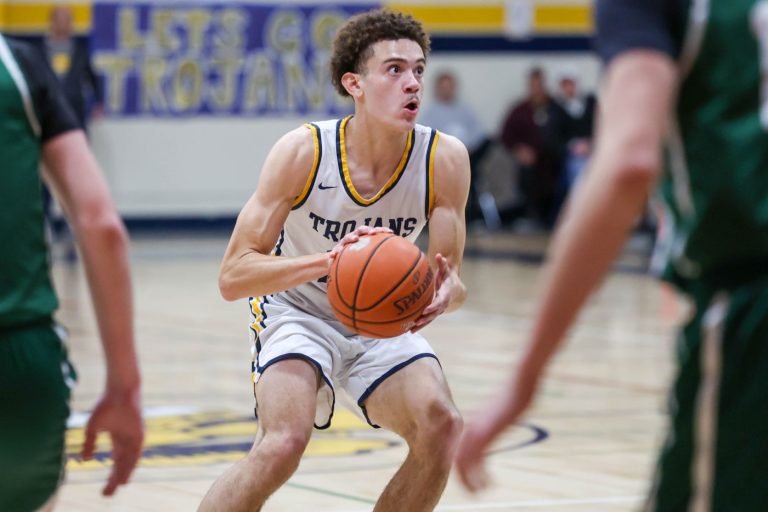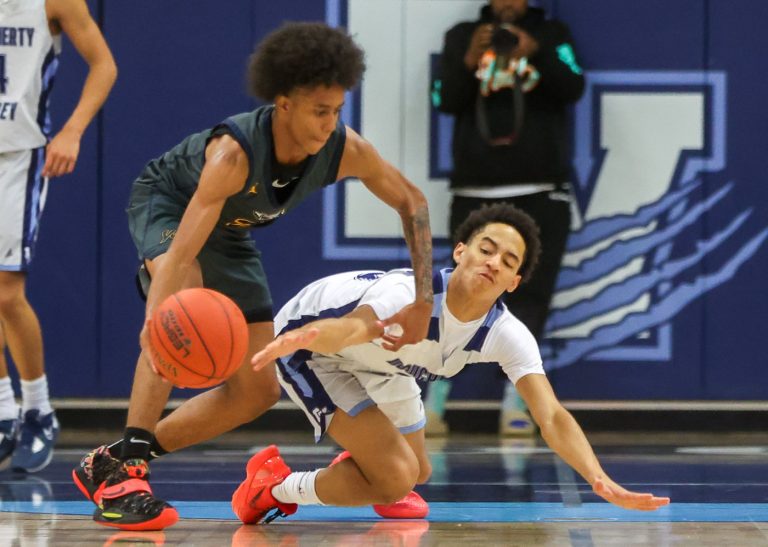KENNEDY SPACE CENTER — Billionaire Jared Isaacman is back in space, but this time he’s planning on taking a historic walk outside the spacecraft as SpaceX found a hole in the weather to get the Polaris Dawn mission off the ground early Tuesday.
A Falcon 9 topped with the Crew Dragon Resilience skipped over the initial 3:38 a.m. target for liftoff at KSC’s Launch Pad 39-A because of lingering rain cells. But weather cleared enough for a misty predawn launch at 5:23 a.m. taking Isaacman and three crewmates on a five-day trip to space that seeks to feature the first-ever commercial spacewalk.
“Today you embark on a journey not just for yourselves, but for all humanity. Each of you has trained tirelessly and prepared rigorously for this moment,” SpaceX Launch Director Frank Messina after the crew made it safely into space. “Godspeed Polaris Dawn crew, may you make history and come home safely.”
“We appreciate the kind words,” replied Isaacman. “We wouldn’t be on this journey without all 14,000 of you back in SpaceX and everyone else cheering us on. We appreciate it. We’re going to get to work.”
The Falcon 9 lit up the skies casting an amber glow over low-lying cloud cover that moved ghostlike over the space center as the rocket climbed higher. For a time, the bright-burning engines created a small halo rainbow around the trailing flame like an iris of an eye piercing through the darkness.
Polaris Dawn launches aboard a SpaceX Falcon 9 rocket, from Launch Complex 39A at Kennedy Space Center, on Tuesday, Sept. 10, 2024. .Mission Commander Jared Isaacman; Mission Pilot Scott Poteet; Mission Specialist Sarah Gillis; and Mission Specialist & Medical Officer Anna Menon are aboard the private spaceflight who will attempt the first commercial spacewalk. (Ricardo Ramirez Buxeda/Orlando Sentinel)
Isaacman, who made his fortune from credit-card processing company Shift4 Payments, made his first trip to space in 2021 on the Inspiration4 mission, which was the first all-civilian mission to space. For Polaris Dawn, he’s flying with three new crewmates, former Air Force pilot Scott Poteet and SpaceX employees Sarah Gillis and Anna Menon.
After midnight, the four crew had walked out from SpaceX’s crew building at Launch Complex 39-A and ventured into a pair of Teslas for a very short ride up the hill to the launch tower. They had all climbed aboard the capsule by 1 a.m. and performed com checks and suit leak checks before 1:30 a.m.
“The crew has taken their last breath of fresh air, until they splash down in five days,” said SpaceX commentator Jessie Anderson. “The side hatch is now closed. One of the last major milestones for the crew before liftoff.”
They had to bide their time for an extra two hours, though, after the first liftoff opportunity was called off.
In the end, the quartet mad it off the pad on the first of up to three missions under Isaacman’s Polaris Program, a partnership with SpaceX that looks to push commercial spaceflight boundaries. Its final mission will be the first crewed mission of SpaceX’s in-development Starship and Super Heavy.
The efforts of each mission look to pave the way for SpaceX founder Elon Musk’s dreams of building a colony on Mars.
To that end, Isaacman and Gillis will tackle the biggest of the mission’s goals on day three when they both venture outside the Dragon on 12-foot-long tethers performing a series of maneuvers off what SpaceX calls the “Skywalker,” a mobility aid with hand and footholds that will allow the duo to never lose contact with the Dragon. Each will be outside the spacecraft for 15-20 minutes during the event that SpaceX plans to live stream Thursday.
“The idea is to develop, test new technology and operations in furtherance of SpaceX’s bold vision to enable humankind to journey among the stars,” Isaacman said last month when he arrived to KSC.
The path to space has been a long one. When originally announced in 2022, Isaacman thought he’d be flying by the end of the year. That schedule kept getting pushed as SpaceX figured out how it planned to safely perform the spacewalk.
How dangerous is Polaris Dawn spacewalk from SpaceX Crew Dragon?
All four crew will be relying on SpaceX’s new extravehicular activity (EVA) suits for the event, since the Crew Dragon has no airlock, and the entire capsule’s atmosphere will need to be vented subjecting it to the vacuum of space.
“There has to be some first steps in this direction, but they are really well thought out, well mitigated, for the benefit of those that will follow that will inevitably be doing spacewalks to build, construct, repair, discover,” Isaacman said. “I think definitely would be the riskiest as part of the mission. It’s also the one that’s received rightfully, probably the majority of the last 2½ years of attention.”
It’s the biggest of three main objectives for the flight. The first objective, though, will take place on day one, when the quartet fly the capsule to an altitude of 870 miles, which would beat the low-Earth orbital record for a crewed mission set in 1966, when NASA astronauts Pete Conrad and Richard Gordon flew on the Gemini 11 mission to 853 miles. Apollo moon missions, obviously, flew to farther distances away from Earth.
Related Articles
SpaceX launches tech billionaire to conduct first private spacewalk
NASA explains strange noise heard by astronaut in Boeing’s Starliner
Professor launches to space aboard Blue Origin New Shepard on mission for NASA
FAA grounds SpaceX after rocket falls over in flames at landing
How dangerous is Polaris Dawn spacewalk from SpaceX Crew Dragon?
Also planned for the flight are 36 research studies and experiments among 31 partner institutions including a SpaceX experiment to test Starlink laser-based communication in space.
This was the 63rd launch of the year from the Space Coast, with all but four coming from SpaceX. It’s the third trip to space for Resilience, the least flown of SpaceX’s four active Crew Dragons, and the first-stage booster for the mission made its fourth trip to space, and made its recovery landing downrange on the droneship Just Read the Instructions stationed in the Atlantic.
It was the third SpaceX human spaceflight of the year and 14th crewed Dragon flight overall.
SpaceX has now flown 54 humans to space, and Isaacman becomes the second two-time flyer alongside NASA astronaut Michael López-Alegría who flew on two private Axiom Space missions aboard Crew Dragon.
SpaceX has two more Crew Dragon flights that could fly before the end of the year and two more planned in early 2025.












